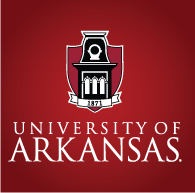This policy contains important information concerning the procedures for accessing and scheduling usage time for the the instrumentation.
SAFETY
Users must be thoroughly knowledgeable of the UAF health and safety regulations and must follow the following online-training modules before gaining access to the facility:
- Radiation Safety
- Electrical Safety
- Hazard Communication
- Basic Hazardous Waste
http://ehs.uark.edu/OnLineCourses.aspx
The UAF radiation safety manual:
http://ehs.uark.edu/DocumentPages/RadiationSafetyManual_2010.pdf
The UAF chemical hygiene plan:
http://ehs.uark.edu/DocumentPages/ChemicalHygienePlan07052013.pdf
The UAF will not be responsible for any accidents resulting from the use of any instruments by users who are not UAF employees. External users and their affiliated company/institution must acknowledge that they are not employed in any way by UAF while conducting work at EOF. UAF does not hold or provide any coverage benefits in any form (no health, life, liability or other insurances and no worker compensation) to external users. External institutions/companies are deemed to be represented by their employees, must carry liability insurance and provide accidental and health insurance to their employees while conducting work at UAF.
The AMCF staff cannot be held responsible for any damage nor for any contamination of any of the user’s samples resulting from the vacuum environment, the electron/ion/x-ray exposure or the experimental conditions or requirements (heating, cooling, and coating.
II. ACCESS
Access to the instruments is limited to authorized users only and during regular working hours (8AM-6PM). Regular users will be granted more access as they become more comfortable with the operation of the instruments. A user with more than 25 hrs of beam/scan time during a two-month period will be considered a “regular user”. Regular users of evening sessions (starting after 6PM) are responsible for running the instrument check-out procedures, turning the lights off in all rooms and locking the front door. Users are not allowed to bring co-workers or visitors for the sessions without the instrument supervisor’s approval.
III. SCHEDULING USAGE TIME
Users who wish to schedule usage time or need operator assistance must make arrangements by contacting us. Online scheduling is available for most instruments for regular users. Scheduling priority will always be given to teaching laboratories and preventive maintenance sessions. Reservations can be modified or cancelled by users at anytime but no later than one day before scheduled. Failure to do so may result in charges/suspension.
IV. COMPUTER USE
Users are informed that the Facility computers are periodically cleaned and that its staff cannot be held responsible for removing data files that have not been copied by the users. Users must copy all their images/data files on an external USB drive or CD-R and they must remove them from the storage computers within a reasonable period of time. Furthermore, no user is allowed to install any file, software, or part of any software (i.e. plugins) on any of the computers. This includes any auto-run software available for install when inserting a flash-drive (i,e, U3).
Modification or copy of any of the data files that belong to any other user will be considered a serious violation and will be reported.
V. EMERGENCIES
1) Technical problems
A minor or technical problem is described by an aperture not operating, a misaligned beam, or any software issues that do not relate to the vacuum or source operating system. Any such problem should be reported to us as soon as possible. In case of minor problems that do not affect the experiments, users must describe the details of the problem on the log sheet (to the best of their knowledge).
2) Technical emergencies
A technical emergency situation corresponds to:
– power outages
– gun or source vacuum not within regular operating conditions
– beam current or high voltage fluctuations
– gun valves not operating
– any of the turbo/ion pumps not operating.
In any such situation, users must call the instrument supervisors at the numbers provided below. Troubleshooting by users is definitely not encouraged and may engage the user responsibility. If you try to figure out what needs to be done to fix the problem, you are probably not the right person for the situation. You have to call until you reach someone to help you.
3) Non-Technical emergencies
Users must contact the EMS, firefighters and/or the police at the numbers below:
- University Police……………………..5-2222
- Police Emergency…………………….911
- Environmental Health & Safety…5-5448
- University Health Center…………..5-4451
VI. PUBLICATIONS-PROJECTS
Any publication/project/poster/presentation that contains or implies contributing results obtained at the facility, must acknowledge the Arkansas Nano & Bio Materials Characterization Facility (AMCF) for the use of any instrument. The University and the funding agencies have strong interests in the scientific work being done at the facility. It is thus critical that every user gives the facility the visibility it needs to operate. This visibility and the good scientific work are the most important criteria when it comes to justify additional spending on new cutting-edge equipment for the benefits of the user community. We suggest users acknowledge the facility by adding the following sentence “The authors greatly appreciate the use of the Arkansas Materials Characterization Facility for the (SEM,XRD,..) studies”.
